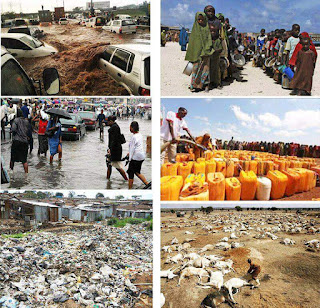Across the globe, ordinary individuals are rewriting the story of our planet—not with big budgets, but with seeds, shovels, and unshakable passion. These eco-heroes have revived dying landscapes, restored lost ecosystems, and sparked global inspiration. Here are five incredible personal restoration projects that prove one person truly can make a world of difference.
Myexpertshub Agro Consultancy (MAC) is a state of the art Consultancy Firm providing its widely-sought-after services in: Forestry, Agroforestry, Agronomy, Apiculture, Aquaculture and Landscaping. MAC is an innovative consultancy business in Kenya, offering expert advice and guidance to farmers, agri-businesses, and organizations in the agricultural sector. We specialize in strategic planning, research, and training to help our clients maximize their potential.
Tuesday, 15 April 2025
Top 5 Environmental Restoration Heroes Who Transformed the Planet
image credit to owner
Location: Majuli Island, Assam, India.
Description: Starting in 1979, Jadav Payeng, known as the "Forest Man of India," single-handedly planted trees daily on a barren sandbar to combat erosion and deforestation. Over 40 years, he transformed the area into a 550-hectare (1,360-acre) forest, larger than Central Park in New York City.
Impact: The Molai Forest now supports a thriving ecosystem with bamboo groves, over 100 species of plants, and wildlife like elephants, tigers, rhinos, and birds. His work has inspired global recognition, including India’s Padma Shri award in 2015, and showcases how one person can restore biodiversity and fight climate change.
Location: Minas Gerais, Brazil.
Description: In 1994, renowned photojournalist Sebastião Salgado returned to his childhood home to find its lush forests replaced by degraded land. His wife, Lélia, suggested replanting, and together they founded Instituto Terra in 1998. Over two decades, they planted 2.7 million trees across 607 hectares (1,500 acres).
Impact: This effort revived a subtropical rainforest, bringing back 172 bird species, 33 mammals, and hundreds of plant species, including some thought extinct locally. Springs reappeared, and the project became a model for reforestation, inspiring similar initiatives
Location: Sahel region, Burkina Faso.
Description: Since the 1980s, Yacouba Sawadogo, a farmer, fought desertification by reviving an ancient technique called "zai"—digging pits to capture rainwater and planting trees and crops within them. He restored 40 hectares (100 acres) of barren land into a forest.
Impact: His forest now hosts over 60 tree species and supports local wildlife, while his methods have spread across the Sahel, aiding the Great Green Wall initiative. Dubbed "the man who stopped the desert," Sawadogo won the Right Livelihood Award in 2018 for his transformative work.
Location: Niger, West Africa.
Description: Agronomist Tony Rinaudo pioneered Farmer-Managed Natural Regeneration (FMNR) in the 1980s, encouraging farmers to nurture existing tree stumps rather than clear land. Starting with a personal mission in Niger, his technique has scaled globally.
Impact: In Niger alone, FMNR restored 5 million hectares (12.5 million acres) of degraded land, growing 200 million trees over 30 years. This has improved soil fertility, food security, and livelihoods for millions, influencing restoration in 24 countries and earning Rinaudo the Right Livelihood Award in 2018.
Location: Kenya, with regional influence.
Description: Beginning in 1977, Wangari Maathai founded the Green Belt Movement to combat deforestation and empower women. She personally drove the planting of over 51 million trees across Kenya, starting with small community efforts.
Impact: Beyond reforestation, her work restored watersheds, reduced soil erosion, and provided fuelwood and income for rural women. Maathai’s personal leadership earned her the Nobel Peace Prize in 2004, and her model has inspired tree-planting movements globally.
Subscribe to:
Comments (Atom)
RAINWATER: THE UNTAPPED GOLD OF DRYLAND
RAINWATER IS THE GOLD WE WASTE IN DRYLANDS. For dryland farmers, harvesting water is as important as harvesting their crop. They need ...

-
Botanical name: Kigelia africana Trade name : The Sausage tree/Cucumber tree Family : Bignoniaceae Local Names : English (Sausag...
-
1. FORESTRY : The art, craft and science of creating/establishing,caring for/managing, using, conserving, and repairing forests, woodlan...
-
CUT COST AND SAVE ENVIRONMENT Photo: credit Natural or Botanical Pesticides? Good gardening practice is to grow plants in ways th...



